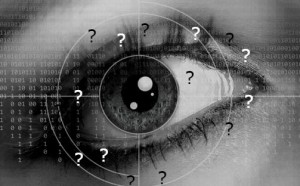
EMDR stands for Eye Movement Desensitisation and Reprocessing.
EMDR Therapy is a psychotherapy approach that has been proven effective for the treatment of trauma – i.e. symptoms and conditions resulting from unresolved distressing life experiences such as violence, natural disaster or childhood trauma.
It uses a structured approach to address past, present and future aspects of disturbing memories. It is an integrative therapy synthesising elements of many traditional psychological orientations as well as current research.
As EMDR is a mental health intervention, it should only be offered by properly trained and licensed mental health clinicians.
In 1987, psychologist Dr Francine Shapiro made the chance observation that eye movements could reduce the intensity of negative emotions associated with certain memories.
Dr Shapiro went on to study this effect scientifically and two years later, in 1989, she published the positive effects of a standard procedure involving eye movements, initially called Eye Movement Desensitisation (EMD), in the Journal of Traumatic Stress (vol 2, pg 199-223).
In 1991, Dr Shapiro changed the name of the procedure to Eye Movement Desensitization and Reprocessing (EMDR) “to reflect the insights and cognitive changes that occurred during treatment, and to identify the information processing theory that she developed to explain the treatment effects” (ref. www.emdr.com).
Since then, this treatment approach continued to develop and evolve through the contributions of therapists and researchers all over the world. Today, it is recognised by leading mental health organisations throughout the world as proven effective for the treatment of Posttraumatic Stress Disorder (PTSD) including:
2013 – World Health Organisation (WHO)
2004 – American Psychiatric Association (APA)
2003 – Clinical Resource Efficiency Support Team of the Northern Ireland Department of Health, Social Services and Public Safety, Belfast
2002 – (Israeli) National Council for Mental Health
2001 – United Kingdom Department of Health

Through the lens of EMDR, psychopathology and psychological symptoms is a disorder of memories. Shapiro developed the Adaptive Information Processing (AIP) model to explain how EMDR treats this disorder of memories (Shapiro, 2001).
Comparable to other physiologically based systems in our bodies, say our digestive system, the AIP system in our brain “digests” any life experience and stores them as memories with the components of related beliefs, images/sound/smell/touch/taste, emotions and sensations. Learning occurs when the new experience can be linked with past experiences that were already processed – in other words the new and past experiences form an adaptive memory network that is accessible and useful for daily functioning.
However, when an experience is “traumatic,” information processing is often incomplete due to the intense negative feelings or dissociation, thus preventing adaptive associations to other memory networks. The components of the experience – i.e. related beliefs, images/sound/smell/touch/taste, emotions and sensations – are “frozen” in the brain in their raw form. Therefore, when this memory is triggered by similar situations, it can be very distressing and the brain may re-experience the memory as if it is happening again in the present, even if it happened in the past. This is called a flashback, part of the common symptoms of Posttraumatic Stress Disorder (PTSD).
Not only major traumatic events such as physical violence, sexual assault or natural disasters lead to PTSD. Sometimes, commonly occurring minor negative events in childhood such as embarrassment in front of peers or chastisement by teachers remain inadequately processed. These can form the basis of dysfunction in perception, responses, attitudes, self-concepts and personality traits.
Dr. Shapiro found that eye movements / bilateral stimulation has a desensitising effect on distressing memories. Once a distressing memory is processed properly, it is integrated into the wider semantic long-term memory networks where associated images, body sensations, cognitions, beliefs and emotions related to the memory become integrated adaptively.
One theory of mechanism is that attention to the key elements of a disturbing memory, along with bilateral physical stimulation (particularly eye movements), stimulates the orienting response (Stickgold, 2002, 2008). This appears to facilitate the rapid reprocessing of information, such as may occur naturally during the Rapid Eye Movement (REM) phase of sleep. More than twenty randomised trials and recent meta-analysis (Lee et al, 2013) have demonstrated positive effects of the eye movements.
Scientific research has established EMDR as effective for posttraumatic stress disorder (PTSD). However, clinicians also have reported success using EMDR in treatment of the following conditions:
| Panic Attacks, Complicated Grief, Complex PTSD, Adverse Childhood Traumas, Dissociative Disorders, Disturbing Memories |
|---|
| Phobias, Pain, Performance Anxiety, Stress Reduction, Addictions |
| Sexual and/or Physical Abuse, Depression Body Dysmorphic Disorders, Personality Disorders |
EMDR Patients share their stories video by EMDRIA:
Lee, C.W. & Cuijpers, P. (2013). A meta-analysis of the contribution of eye movements in processing emotional memories. Journal of Behavior Therapy & Experimental Psychiatry, 44, 231-239.
Shapiro, F. (1989). Efficacy of the eye movement desensitisation procedure in the treatment of traumatic memories. J Trauma Stress. Apr;2(2): 199-223.
Shapiro, F: Eye Movement Desensitization and Reprocessing. Basic Principles, Protocols and Procedures (Second Edition). Guildford Press (2001).
Stickgold, R. (2002). EMDR: A Putative Neurobiological Mechanism of Action. Journal of Clinical Psychology, Vol. 58(1), 61-75.
Stickgold, R. (2008). Sleep-Dependent Memory Processing and EMDR Action. Journal of EMDR Practice and Research, Volume 2, Number 4: 289-299.

